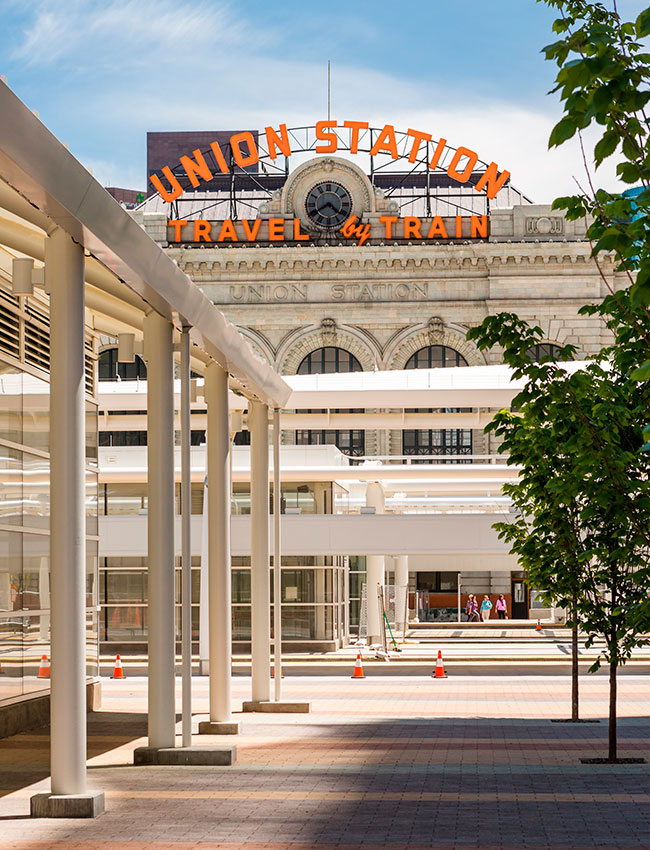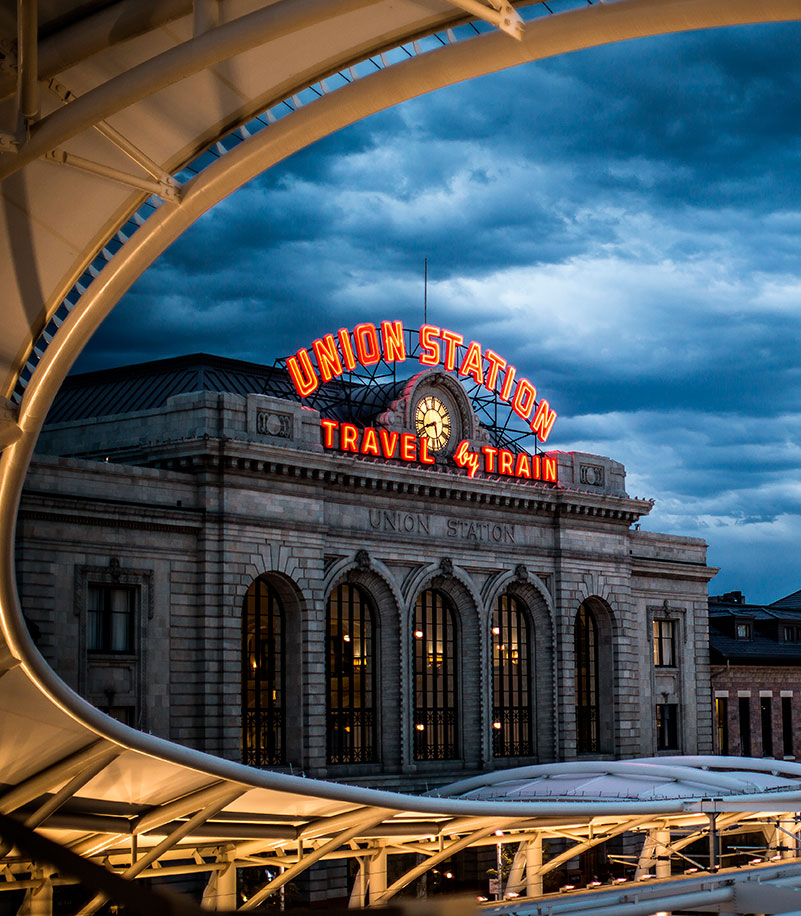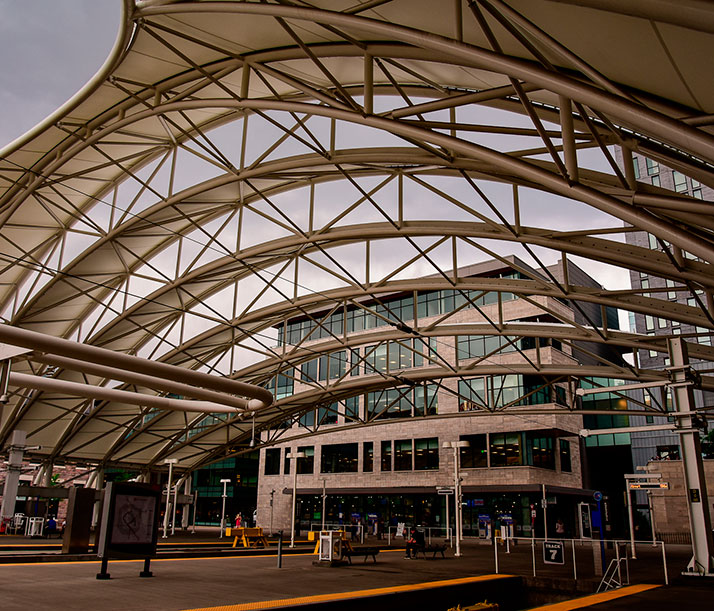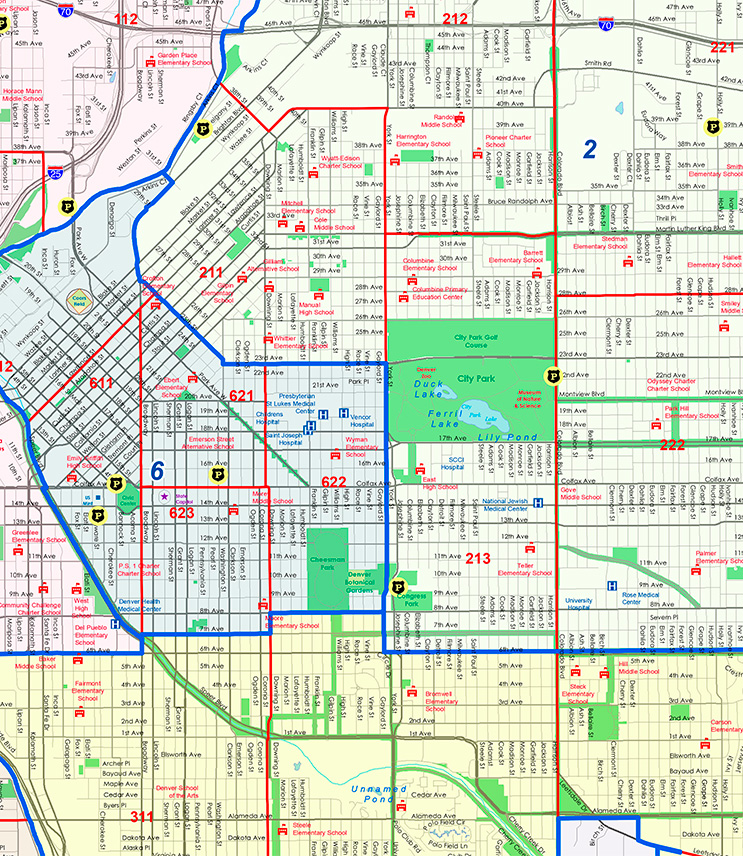
Union Station
Union Station is bordered by the Cherry Creek to the southwest, the South Platte River to the northwest (though D10 only extends to the BNSF Railway), 20th St to the northeast, and Lawrence St to the southeast.
 Union Station Demographics
Union Station Demographics
8,628
Total Population
Denver Population: 706,799
36
Median Resident Age
Denver Median Resident Age: 35.5
$70,918
Median Income Per Resident
Denver Median Income Per Resident: $53,437
$94,961
Median Income Per Household
Denver Median Income Per Household: $85,721
$1,317
Median Rent
Denver Median Rent: $1,143
$732,075
Median Home Value
Denver Median Home Value: $513,621
22%
% homes owner occupied (vs. renter)
Denver % of homes owner occupied (vs. renter): 46.4%
80%
% homes occupied (vs. vacant)
Denver % home occupied (vs. vacant): 94%
 Public Safety
Public Safety
Denver Police District 6
Address: 1566 N Washington St.
Phone:720-913-2800
Community Resource Officers
Denver Police Districts Map
The map above shows the outline of Police Districts 2, 3 & 6 within the boundaries of Denver District 10.
Union Station – Year Home Was Built
Data for Year Home Was Built-Union Station Compared to Denver
| Year Home Was Built | Union Station | Denver |
|---|---|---|
| Before 1939 | 10% | 18% |
| 1940 – 1949 | 1% | 6% |
| 1950 – 1959 | 1% | 14% |
| 1060 – 1969 | 0% | 11% |
| 1970 – 1979 | 5% | 13% |
| 1980 – 1989 | 7% | 8% |
| 1990 – 1999 | 6% | 7% |
| 2000 – 2009 | 25% | 11% |
| 2010 – 2013 | 43% | 13% |
| After 2013 | 1% | 0.3% |
Union Station – Resident Ethnicity
Data for Resident Ethnicity-Union Station Compared to Denver
| Resident Ethnicity | Union Station | Denver |
|---|---|---|
| White | 79.5% | 57.5% |
| Hispanic | 9.3% | 27.4% |
| Black | 0.6% | 7.5% |
| Asian | 8.2% | 3.1% |
| Other | 0% | 0.3% |
| Two or more | 2.4% | 3.7% |
Union Station – Resident Education Level
Data for Resident Education Level-Union Station Compared to Denver
| Resident Education Level | Union Station | Denver |
|---|---|---|
| Bachelor or higher | 79% | 53% |
| Some college | 15% | 22% |
| HS grad or Equiv | 4% | 16% |
| Less than HS | 2% | 10% |
Union Station – Resident Age
Data for Resident Age-Union Station Compared to Denver
| Resident Age | Union Station | Denver |
|---|---|---|
| 0 to 9 | 1% | 11% |
| 10 – 19 | 1% | 10% |
| 20 – 29 | 31% | 18% |
| 30 – 39 | 25% | 21% |
| 40 – 49 | 8% | 14% |
| 50 – 59 | 12% | 10% |
| 60 – 69 | 12% | 9% |
| 70 – 79 | 6% | 5% |
| 80+ | 4% | 3% |
 Union Station History
Union Station History

The city of Denver was founded in LoDo at the confluence of the South Platte River and Cherry Creek in November 1858 after a small amount of gold was discovered there. Prior to that time, the area had been inhabited by the Cheyenne and Arapaho, who had legal title to the land through the signing of the Treaty of Fort Laramie in 1851. Legal possession of the region, including the area that would become Denver, passed to the United States in 1861 with the Treaty of Fort Wise, which to this day is contested.
The arrival of the railroad in 1870 brought new businesses, an improved economy, and a fast link to the East. In addition, the railroad brought new building materials such as pressed and cast metal, which was used for cornices, storefront columns, and window hoods, adding decoration to the plain facades of Denver’s commercial buildings which can still be seen today.
In 1893 the Sherman Silver Purchase Act was repealed, sending Denver’s economy into a severe depression and nearly halting building construction in Lower Downtown. As the economy slowly recovered, a few new structures were built in the area, but never did this recovery resemble the boom years following the arrival of the iron horse. By the mid-1930s, construction in the district came to a virtual halt. The period following the end of World War II saw the area go through a slow, steady decline due to the development of the interstate highway system. Passenger service through Union Station went from a high of eighty-eight trains a day to only one or two today.
In 1973 the 1400 block of Larimer Street was designated Denver’s first Historic District, sparking a movement to save the ancient heart of town from the wrecking ball of urban renewal. Following this trend, a small but growing number of urban pioneers saw the potential value of the area and began to invest in and renovate its many interesting buildings. In March 1988 the unique historical and architectural value of the area was officially recognized by the City and County of Denver when it declared Lower Downtown a Historic District.
By the time Coors Field opened on the edge of the LoDo Historic District in 1995, the area had revitalized itself, becoming a new, hip neighborhood filled with clubs, restaurants, art galleries, boutiques, bars, and other businesses.
Read more about Union Station History
The Union Station neighborhood, affectionately called “LoDo,” is a neighborhood rich in history, and controversy.



